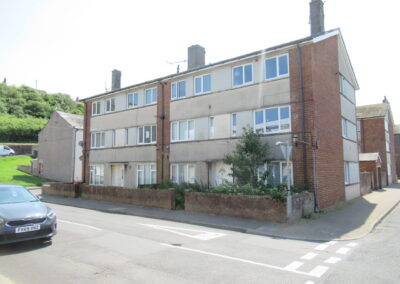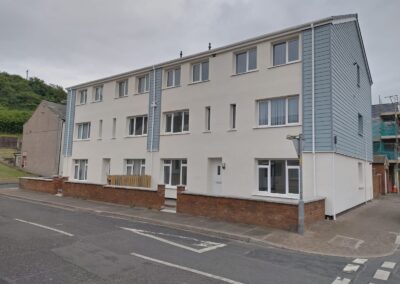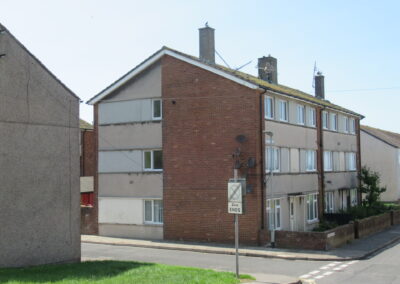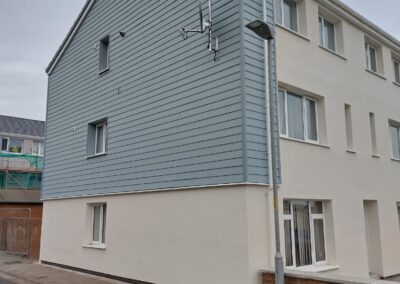INCA Case Study: Wallace Lane & Churchill Place Cumbria
Wallace Lane & Churchill Place
 Project Type: Refurbishment
Project Type: Refurbishment
Building Type: Low Rise, Residential
Architect: RNJ Architects
System Designer: Structherm Ltd
Installer: Thomas Armstrong (Construction) Ltd
System & Finish: Structherm EWI System + Silicone Render
U-value Before: 1.4 W/m2K
U-value Achieved: 0.29 W/m2K
Wallace Lane and Churchill Place, located in the very exposed location of Maryport, Cumbria, consisted of two blocks of maisonettes, comprising over 16 residential properties which required refurbishment and External Wall Insulation (EWI). The project was undertaken by RNJ Partnership and Thomas Armstrong (Construction) Ltd, in association with Structherm Ltd, serving as the system designer.
The properties were originally constructed with exposed facing brick cavity walls on the gable elevations and some smaller areas on the front and rear. The front and rear elevations generally had a rendered finish applied to the cavity walls. Additionally, there were concrete balconies at the rear elevations recessed within the building’s footprint. The roof had a dual-pitched design with a concrete tile covering and three brick chimneys on each roof, located at each of the gables and one at the central area of each roof.
Over time, the blocks of flats developed ongoing issues with rainwater penetration, particularly via the roof coverings, open walkway at first floor level, and concealed structural steel beams, which showed signs of corrosion.
To address these issues and ensure the long-term habitability of the accommodations, it was recommended to replace the roof coverings due to frequent leaks, visible historical repairs, widespread water staining on the roof structure, perished roof membrane, and the condition of the tiles.
Regarding the external walls, further investigations revealed that the insulation within the cavity walls was wet, leading to penetrating dampness. The best solution for this was to implement an External Wall Insulation system (EWI), as this approach would weather protect the structure and mitigate any future damaging spalling of the brickwork.
Solution & Specification
The proposed solution and specification included extensive works to replace the roof coverings, removing chimneys below the roof, and renewing soffits, fascias, and bargeboards. Additionally, a new Structherm External Wall Insulation system was to be installed on the brickwork/rendered external walls. The EWI would be finished with cement/resin horizontal shiplap boards and a 3mm graded Struc-Sil silicone textured through colour render over mineral wool insulation. All of the cladding materials achieved an A2 fire rating to BS EN 13501 as required by the client. Furthermore, the project would involve concrete repairs to the balconies and the replacement of the balustrade with structural glass/stainless handrails, providing enhanced safety and aesthetics.
The End Result
The end result of the residential project was highly successful, with significant improvements in thermal insulation, reducing the U-value from 1.4 to just 0.29 w/m2k. This led to a considerable reduction in heating costs and a decrease in carbon emissions. The external envelope to the building is now weathertight and able to resist the high exposure to wind driven rain from the Irish Sea.
This project showcases the expertise and experience of Structherm in achieving such positive outcomes. Plus it was on budget.






